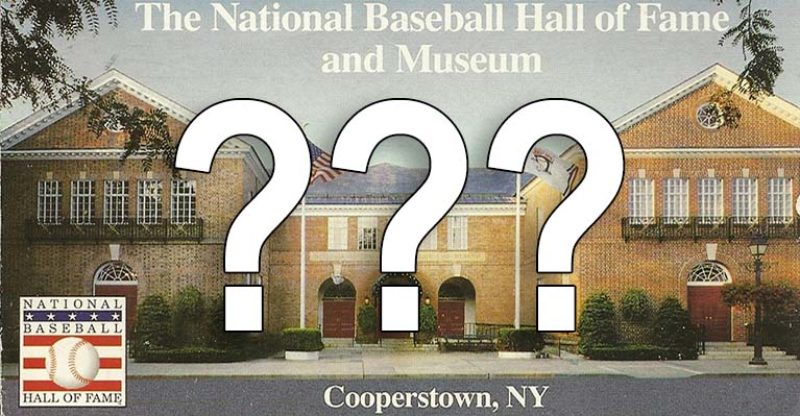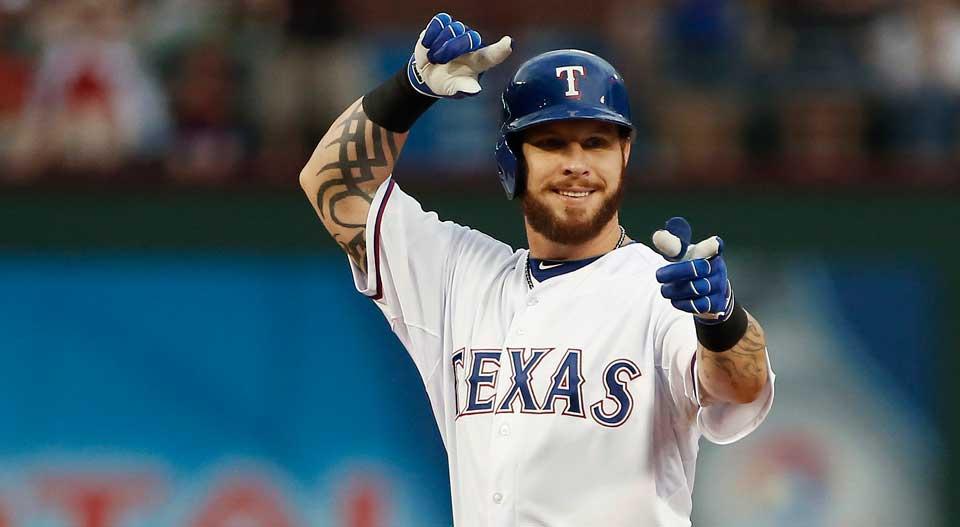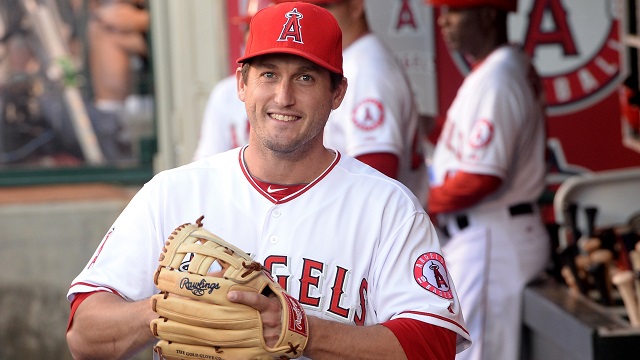The ‘Hall Of Fame’ Has No Angels, So Who Is Going To Be Their First?
So what do the Angels, Colorado Rockies, Miami Marlins, Tampa Bay Rays and Washington Nationals have in common.
If you add up the ‘Hall Of Fame’ inductees from all five franchises, the grand total is ZERO!
Tainted Total
So there they are, the New York Yankees, leading the pack with 24. But with an asterisk.
Their former crosstown rival Giants have 20 representatives in Cooperstown (the San Franciscans have 5). So I guess you could say the Giant franchise is actually No. 1 all-time.
The St. Louis Cardinals (17) and the Chicago Cubs (14) are also well represented.
The Rookies best chances were Todd Helton and Larry Walker. Actually Walker’s park-and-era adjusted WAR of 72.6 was better than a ton of enshrines.
Going, Going, Gone!
Ex-Marlin Miguel Cabrera probably will be inducted as a Detroit Tiger.
Tampa Bay’s Evan Longoria, just 31, has an opportunity to enhance his resume.
So does Washington’s Bryce Harper who, at 24, could become a monster if he stays healthy.
But before they bailed for the Nation’s Capitol, the Montreal Expos produced a trio of recipients: Andre Dawson, Gary Carter and Tim Raines.
There are also four enshrined notables who passed though Anaheim: Rod Carew, Reggie Jackson, Bert Blyleven and Dave Winfield.
Ryan No. 1
And before all you Angel historians lose your cool, NO, I didn’t forget Nolan Ryan.
But it is my contention that RYAN should have gone to Cooperstown as an ANGEL!
The ‘Ryan Express’, a moniker given him by Los Angeles Herald Examiner beat writer Dick Miller, spent the final five years of his distinguished career in Arlington.
Yet his best eight seasons unquestionably occurred in Anaheim.
Remarkable Summer
1973 was a ‘Hall Of Fame’ year all by itself.
That season, Ryan hurled the first two of his record seven no-hitters.
He left the Kansas City Royals scratching their heads on May 15, 3-0, then simply over powered the Tigers (17 strikeouts) in Detroit, 6-0, exactly two months later.
Ryan also no-hit Minnesota on September 28, 1974 and Baltimore on June 1, 1975.
And his 12 one-hitters tied Bob Feller’s major league record.
Meanwhile, Ryan wrapped up 1973 in September when he set the major league single season strikeout record (383) by whiffing Minnesota’s Rich Reese at Anaheim Stadium.
Ryan finished with a 21-16 record, an earned run average of 2.87 and 26 complete games that spanned 326 innings.
And although his WAR was 7.7 and superior to that of Baltimore’s Jim Palmer’s 6.3, he wasn’t awarded the Cy Young Award that he richly deserved.
East Coast Bias!
Palmer (22-9), the darling of the east coast media and supported by their unthinkable bias, outdistanced Ryan in the balloting, 88-62.
To me, it was one of the great injustices of Ryan’s career.
The major league’s career strikeout leader (5,714), Ryan won more games with the Angels (138) than he did during his nine years in Houston (106) or his five summers with the Rangers (52).
Proving that ’73 was no fluke, the 6-2, 170-pounder responded with 22 wins the following season, 17 victories in 1976, 19 in 1977 and 16 in what would be his final year in southern California, 1979.
Thanks Buzzie
Buzzie Bavasi was the culprit.
And owner Gene Autry never forgave his general manager.
‘The Cowboy’ loved ‘The Express’.
But true to his beliefs, Autry was a hands off owner who let his baseball people tend to the baseball matters.
So when the Astros offered Ryan a $4.5M/4y contract on November 19, Bavasi failed to counter.
To paraphrase, the GM slighted Ryan by saying he would go out and sign two 8-7 pitchers as replacements.
Autry was devastated and Bavasi later admitted that it was probably the biggest mistake of his baseball life.
The First Angel
Despite his unorthodox departure, it is the feeling here that Nolan Ryan should have entered ‘The Hall’ as an Angel.
For Carew, the situation was reversed.
He spent the first dozen seasons of his 19 year career in Minnesota.
And he put up monstrous numbers.
How’s this for some hefty credentials: .334 batting average, 74 home runs and 733 RBI!
Show Me The Money!
But Carew too sought greener pastures.
And during his first five years in southern California he certainly did not disappoint.
His batting average never slipped under .300 yet his statistics with the Angels hardly matched those with the Twins.
As his career wound down, Carew finish with a .314/18/282 line in Anaheim.
Now if Mike Trout remains an Angel (he will be a free agent after the 2020 season), there is no doubt he is headed for a first ballot election to the baseball shrine.
Yet that other guy who wore the same number (27) could be the Angels first honoree.
Maybe The ‘Other’ 27?
Vlad Guerrero arrived in 2004 and the rest is history.
All he did in his first year was put up American League Most Valuable Player Award numbers.
Vlad collected 206 hits, batted .337, hammered 39 home runs, drove home 126 teammates and had an OPS of .989.
He also established career highs by scoring 124 runs and collecting 366 total bases.
And he buried Gary Sheffield in the MVP voting, 354-254.
During his six years (2004-2009) in Anaheim the Angels won five American League West titles.
Guerrero contributed mightily.
He batted .319, cracked 173 home runs and knocked in 616 runs.
Expos Inconspicuous
Although his first eight summers in Canada were slightly more productive (.323 BA, 234 HR, 702 RBI), the Expos finished fifth once, fourth five times, and second twice.
Needless to say, his impact in Anaheim far outweighed what he accomplished in Montreal.
And that brings us to Albert Pujols, who on June 3 hit the 600th home run of his ‘Hall Of Fame’ career.
Punched His Ticket
That fete guarantees Pujols a place in Cooperstown.
But as an Angel?
After joining a fraternity of Barry Bonds (762), Hank Aaron (755), Babe Ruth (714), Alex Rodriquez (696), Willie Mays (660), Ken Griffey Jr. (630), Jim Thome (612) and Sammy Sosa(609) you’d certainly hope so!
Or as a Cardinal, where he had eminence success for 11 years?
So where do we start?
I guess in 2001 when Pujols captured the National League’s Rookie Of The Year Award.
But that was just the beginning.
Powerful Resume
The Santo Domingo native was a nine-time All Star (2001, 2003-2010) in St. Louis.
Five times (2003, 2004, 2008, 2009, 2010) Pujols won Silver Slugger Awards.
He was the league’s MVP three times (2005, 2008, 2009).
Pujols also was a three time (2003, 2008, 2009) Player Of The Year honoree.
Twice (2003, 2009) he was the recipient of the Hank Aaron Award.
The 6-3, 240-pounder captured Gold Glove Awards in 2006 and 2010.
He was selected the 2008 winner of the Roberto Clemente Award and won the Lou Gehrig Award the following year.
Two-Time World Champion
Pujols was a World Series champion in 2006 when the Cards beat Detroit in five games.
Five years later he helped St. Louis beat Texas in an exciting, nail-biting seven game series.
His career credentials with the Red Birds are staggering.
A .328 batting average. He hit 445 home runs and drove in 1,329 runs. He had a .420 OBP and slugging percentage of .617.
How Does It End?
His current Angel contract will take him through the 2021 season.
It’s hard to fathom what might transpire between now and then.
What we do know is his ultimate destination.
Only question?
Whether or not a Halo will be covering his dome?
John Stellman
Latest posts by John Stellman (see all)
- Eight Teams With A Common Bond, And A Ninth Just Crashed The Party - February 16, 2022
- Is This Dodgers Team Better Than Last Season’s World Champions?? - February 15, 2021
- New GM Minasian: Is 3rd Time The Charm, Or Is It 3 Strikes You’re Out? - November 16, 2020








